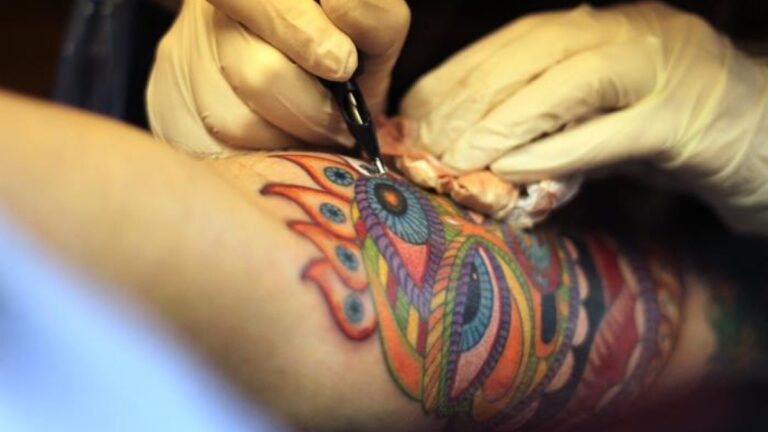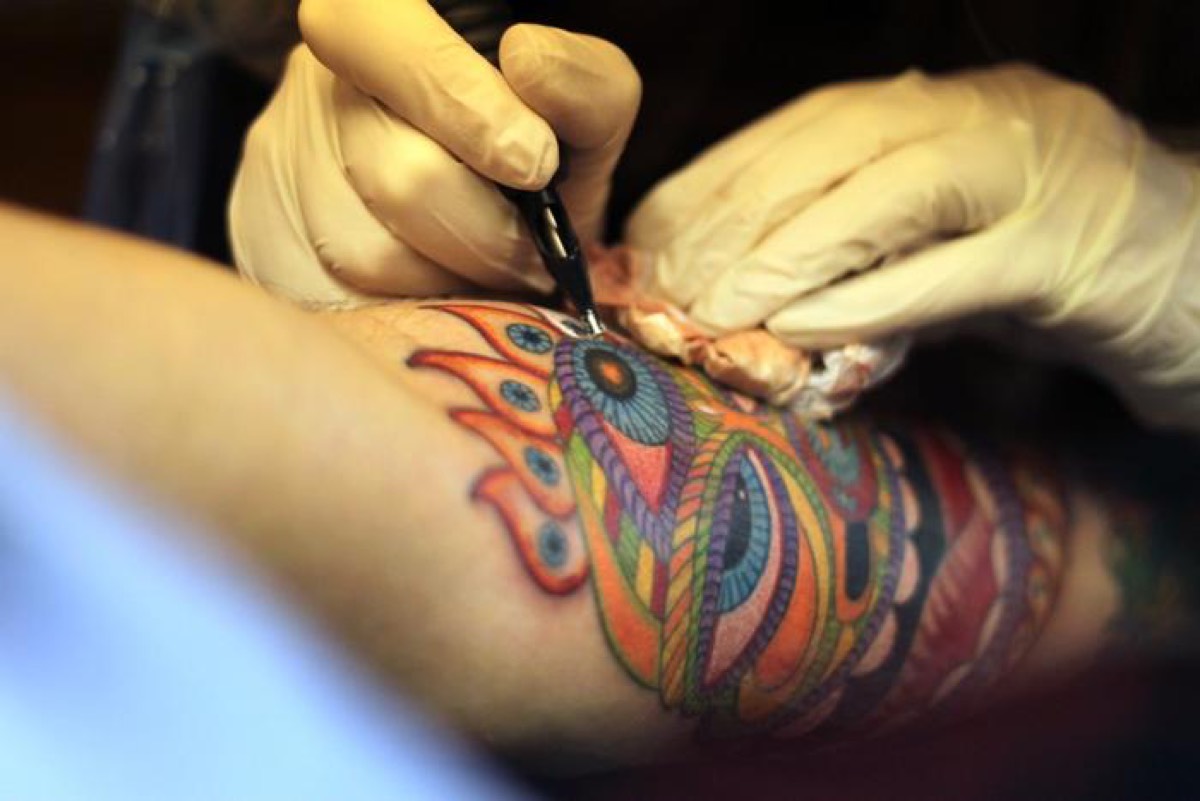
Swierk et al. use various methods, including Raman spectroscopy, nuclear magnetic resonance spectroscopy, and electron microscopy, to analyze a broad range of commonly used tattoo inks. This enables them to identify specific pigments and other ingredients in the various inks.
Earlier this year, Swierk’s team identified 45 out of 54 inks (90 percent) with major labeling discrepancies in the US. Allergic reactions to the pigments, especially red inks, have already been documented. For instance, a 2020 study found a connection between contact dermatitis and how tattoos degrade over time. But additives can also have adverse effects. More than half of the tested inks contained unlisted polyethylene glycol—repeated exposure could cause organ damage—and 15 of the inks contained a potential allergen called propylene glycol.
Meanwhile, across the pond…
That’s a major reason why the European Commission has recently begun to crack down on harmful chemicals in tattoo ink, including banning two widely used blue and green pigments (Pigment Blue 15 and Pigment Green 7), claiming they are often of low purity and can contain hazardous substances. (US regulations are less strict than those adopted by the EU.) Swierk’s team has now expanded its chemical analysis to include 10 different tattoo inks from five different manufacturers supplying the European market.
According to Swierk et al., nine of those 10 inks did not meet EU regulations; five simply failed to list all the components, but four contained prohibited ingredients. The other main finding was that Raman spectroscopy is not very reliable for figuring out which of three common structures of Pigment Blue 15 has been used. (Only one has been banned.) Different instruments failed to reliably distinguish between the three forms, so the authors concluded that the current ban on Pigment Blue 15 is simply unenforceable.
There are regulations on the book that are not being complied with, at least in part because enforcement is lagging,” said Swierk. “Our work cannot determine whether the issues with inaccurate tattoo ink labeling is intentional or unintentional, but at a minimum, it highlights the need for manufacturers to adopt better manufacturing standards. At the same time, the regulations that are on the books need to be enforced and if they cannot be enforced, like we argue in the case of Pigment Blue 15, they need to be reevaluated.”
Analyst, 2024. DOI: 10.1039/D4AN00793J (About DOIs).

